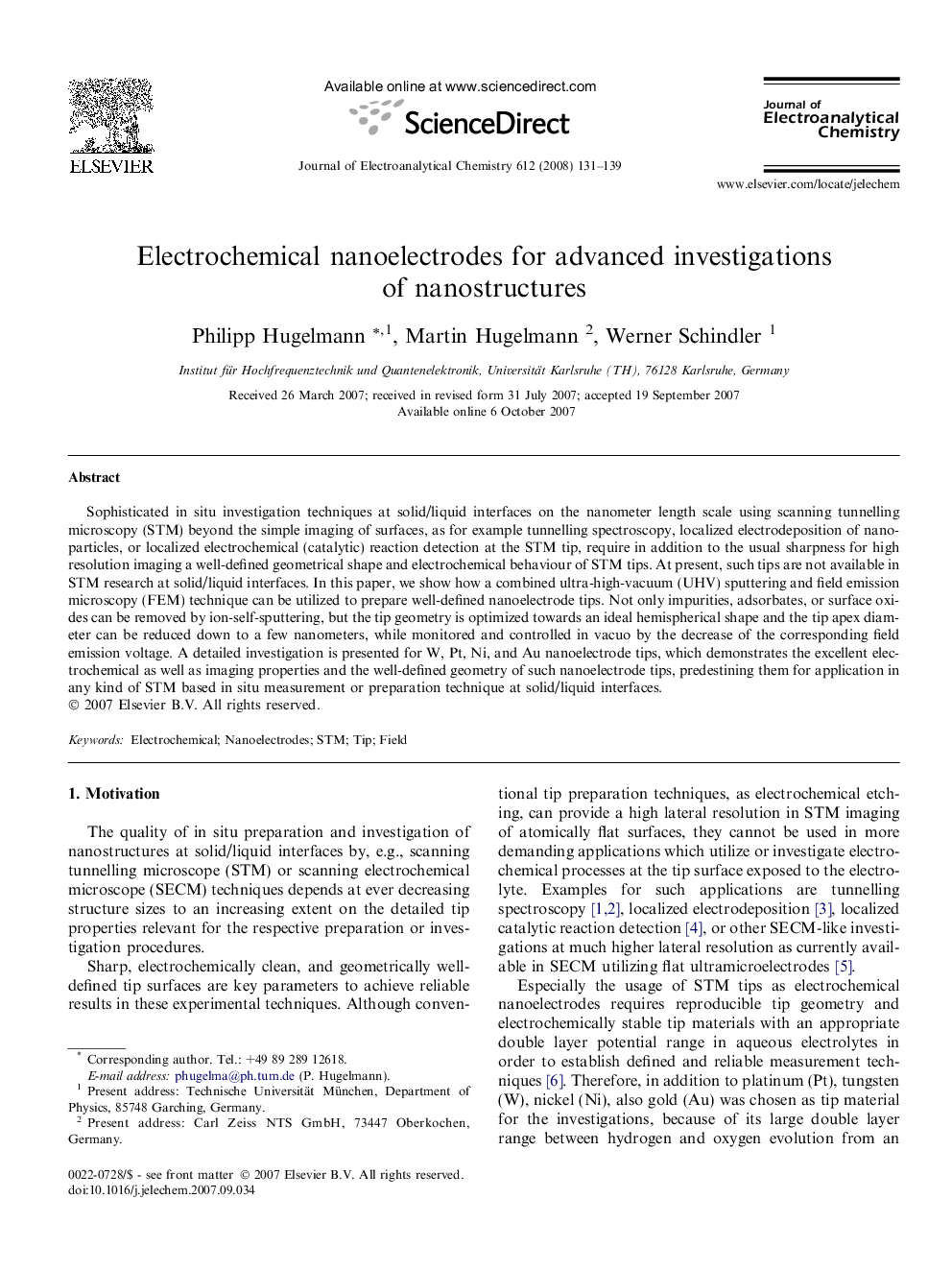| Article ID | Journal | Published Year | Pages | File Type |
|---|---|---|---|---|
| 220645 | Journal of Electroanalytical Chemistry | 2008 | 9 Pages |
Sophisticated in situ investigation techniques at solid/liquid interfaces on the nanometer length scale using scanning tunnelling microscopy (STM) beyond the simple imaging of surfaces, as for example tunnelling spectroscopy, localized electrodeposition of nanoparticles, or localized electrochemical (catalytic) reaction detection at the STM tip, require in addition to the usual sharpness for high resolution imaging a well-defined geometrical shape and electrochemical behaviour of STM tips. At present, such tips are not available in STM research at solid/liquid interfaces. In this paper, we show how a combined ultra-high-vacuum (UHV) sputtering and field emission microscopy (FEM) technique can be utilized to prepare well-defined nanoelectrode tips. Not only impurities, adsorbates, or surface oxides can be removed by ion-self-sputtering, but the tip geometry is optimized towards an ideal hemispherical shape and the tip apex diameter can be reduced down to a few nanometers, while monitored and controlled in vacuo by the decrease of the corresponding field emission voltage. A detailed investigation is presented for W, Pt, Ni, and Au nanoelectrode tips, which demonstrates the excellent electrochemical as well as imaging properties and the well-defined geometry of such nanoelectrode tips, predestining them for application in any kind of STM based in situ measurement or preparation technique at solid/liquid interfaces.
